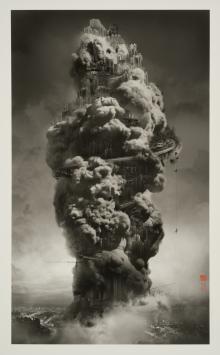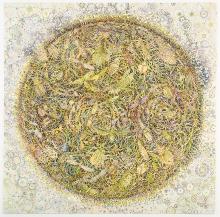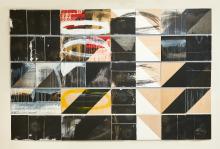On Earth: A Fragile Existence highlights works from the JSMA’s permanent collection that reflect a multi-layered understanding of humanity's role in our shared ecology with the non-human, or more-than-human, world. The Anthropocene, our current geological age in which human activity is the dominant influence on the natural world, is a time of both staggering environmental change and incredible innovation and discovery. As witnesses and participants in this era, artists observe, record, interpret, advocate, and imagine. The works on view are presented as guideposts in considering these complex and urgent issues and encourage reflection on one’s own place within our shared global ecology.
- What is the current state of the natural world, and what is humanity’s responsibility to our environment?
- How do human and animal interactions shape the ecology we share?
- What is the relationship between ecological shifts and human rights issues, including food justice, spatial justice, access to clean water, and environmental racism?
- How does art record the impact of human activity, including industrialization and extraction practices, global trade, and migration, on our climate and environment?
- Where do art and science intersect, and what can be learned from art that documents or responds to our most pressing environmental issues?
- What can humans do to change course?
On Earth: A Fragile Existence is organized by Danielle Knapp (McCosh Curator), and Thom Sempere (Associate Curator of Photography), with contributions from JSMA Executive Director, John Weber, and Anne Rose Kitagawa, Chief Curator of Collections & Asian Art and Director of Academic Programs, and the assistance of Morning Glory Ritchie (Mildred Bryant Brooks Student Intern in American Works on Paper). This exhibition supports the goals of the JSMA’s Faculty Engagement Working Group and the University of Oregon’s Environment Initiative, a campus-wide coordinated effort to create an intellectual and active hub focused on higher education’s role and contribution to a just and livable future. On Earth: A Fragile Existence invites further conversation around the university’s 2021-22 “Common Reading” selection, Braiding Sweetgrass: Indigenous Wisdom, Scientific Knowledge and the Teachings of Plants (Milkweed Editions, 2013) by Robin Wall Kimmerer (Citizen Potawatomi Nation). For more information, visit https://environment.uoregon.edu/about-us and https://fyp.uoregon.edu/common-reading-2021-2022-braiding-sweetgrass.










